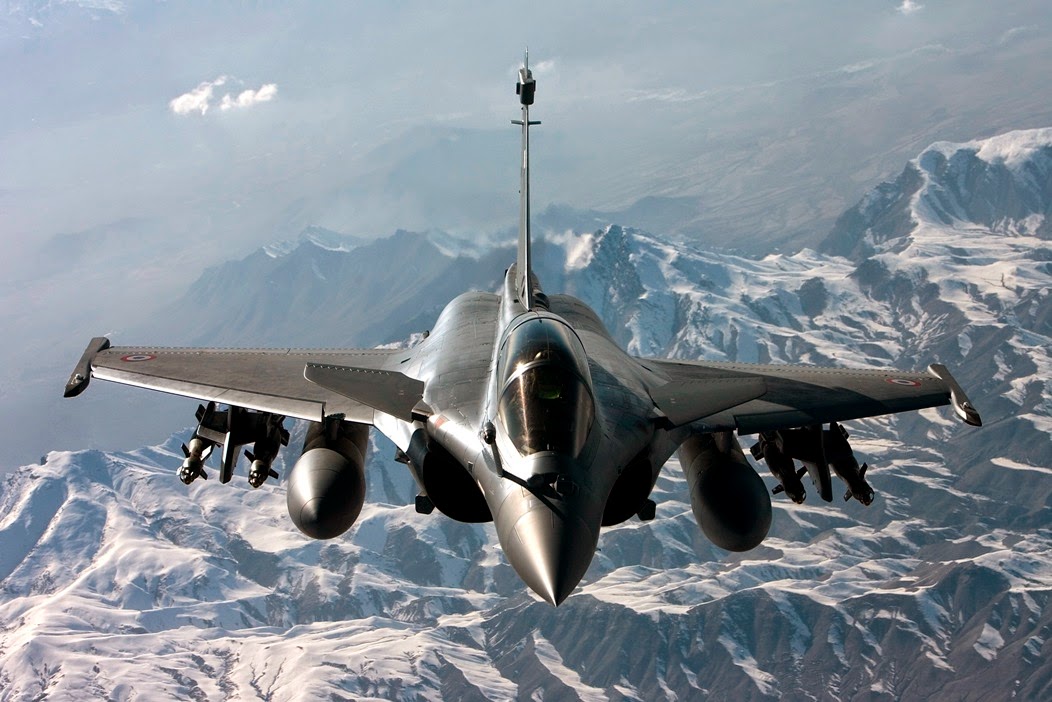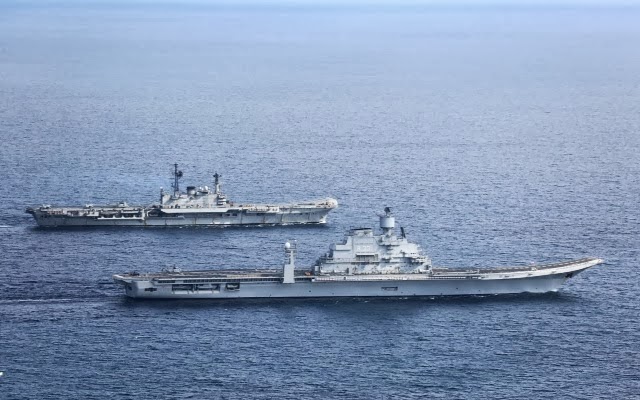Indian print media of 1960s and then Indian Government only speak about Sino-Indian conflict of 1962 where weak political leadership gave the military advantage to China. However, the history of 1962 conflict is not the only history that exists, though this is what the Indian history syllabus have been teaching us for a long time.
The setback in the 1962 can be credited to the Indian political leadership, more than the military excellence of the PLA. It was this illogical fantasy of “Hindi Chini Bhai Bhai”. It would leave one confused whether this was the Chinese diplomatic excellence or Indian diplomatic blunder when political class could not see the reality behind the Indo-Chinese border even after being cautioned by Indian Military on numerous occasions.
I believe, this is the first article in 21st century which is tearing apart the cloak of secrecy on Second Sino-Indian War of 1967, reasons best known to political class and history commission there was an intentional cover-up of this war to a great extent. Limited reach of print media in that era helped Government at that time to keep the details about this war from the mainstream.
On one side is a hush-hush by China, which is well understood because of the huge setback of this strategic defeat which caught over-confident military leadership of Chinese Military by surprise. It being so close to 1962 would have open a can of worms for Chinese Communist Party and sense of euphoria in Chinese public for their leadership would have quickly evaporated.
However, real surprise is on Indian side which after scoring a decisive victory over Chinese in 1967, avenging their 1962 setback valiantly, still chose to wrap one of the finest hour of Indian Military under cloak of secrecy. Their could be only one reason for that, a decision to not rub the salt on the wounds of Indian political leadership of 1962, since this valiant victory of 1967 by a competent and decisive Indian Military would have exposed the stark contrast to incompetent leadership from politicians in 1962.
After the setback of 1962, China dared to attack India again on at least two occasions and lost both of these conflicts badly. After 10th October 1967 Chinese People’s Liberation Army never ever dreamt to attack India, and their guns fell silent ever since. Indians need to boost up their morals by knowing the exact truth of 1967 War, when Indian Army had beaten back the columns of Chinese Army all the way back to their barracks.
Second Sino-Indian War of 1967 got its roots from 1965 Indo-Pak war where several small scale military skirmishes between Indian and Chinese troops happened on the Sino-Indian border. Chinese Military was looking to intrude into the Indian Territory and gain strategic position so that they can engage India in a manner that Indian Military attention is divided between Pakistan and China. However the Indian Army thwarted all these attacks and Chinese authorities forced their military to withdrew due to “heavy casualties” compared to “moderate loss” on India side.
Few day before hostilities broke out in September of 1967, Chinese Army threatened through loudspeakers that if Indians don’t withdraw from their perceived border line, 1962 type casualties will repeat. However, this time Indian Army was in avenging mood. Chinese Army marched forward in large numbers towards Indian Army positions, however were shocked to see the heavily fortified Indian positions instead of vacated posts as they were expecting while boasting of 1962 on loudspeakers, seeing this Chinese columns halted and promptly marched back without firing at Indian positions.
In order to de-escalate the situation on Sino-Indian border and make sure Chinese do not have an excuse for border violations, it was decided by the Indian Military to lay a wire in the centre of the Pass from Nathu La to Sebu La to demarcate the perceived border. This task was to be carried out by the Jawans of 70 Field Company of Engineers assisted by a company of 18 Rajput deployed at Yak La pass further north of Nathu La. The wire laying was to commence at first light on the fateful morning of 11 September 1967.
On 11th September, the engineers and Jawans started erecting long iron pickets from Nathu La to Sebu La along the perceived border while 2 Grenadiers and Artillery Observation Post Officers at Sebu La and Camel’s Back were on alert. Immediately the Chinese Political Commissar, with a section of Infantry came to the centre of the Pass where Lt. Col Rai Singh, CO 2 Grenadiers was standing with his commando platoon. The Commissar asked Lt Col Rai Singh to stop laying the wire. Orders to the Indian Army were clear. They were not to blink. An argument started which soon built up into a scuffle. In the ensuing melee, the commissar got roughed up. Thereafter the Chinese went up back to their bunkers and engineers resumed laying the wire.
Within a few minutes of this, a whistle was heard on the Chinese side followed by murderous medium machine gun fire from north shoulder. The pass was completely devoid of cover and the Jawans of 70 Field Company and 18 Rajput were caught in the open and suffered heavy casualties which included Col Rai Singh who was wounded. He was awarded MVC later. 2 Grenadier opened small arms fire on North shoulder but it was not very effective. Within the first ten minutes, there were nearly seventy dead and scores wounded lying in the open on the pass. Within half an hour, Chinese artillery opened up on the pass as well as in the depth areas but it was mostly prophylactic fire due to lack of observation and failed to do much damage.
Looking at this blatant aggression from Chinese, full of rage Indian Artillery observation post officers went for an extremely heavy artillery response to Chinese positions. Because of excellent domination and observation from Sebu La and Camel’s back, Indian artillery fire decimated Chinese positions. It was followed by a ferocious counter strike from the Mountaineers, Grenadiers and Rajputs which included close quarter combat also.
Chinese were caught off-guard by this ferocity from Indian side and suffered heavy casualties which number more than 300 dead and 450 wounded according to Chinese estimate which numbers the Indian tolls up to 89; however Indian authorities claim it to be 65. Most of the Chinese bunkers on North shoulder and in depth were completely destroyed and Chinese suffered very heavy casualties across all their positions.The artillery duel thereafter carried on relentlessly, day and night. For the next three days, the Chinese were taught a very good lesson.
After suffering heavy casualties at Nathu La, a bewildered Chinese Army tried to open another front and planned to extend the conflict throughout Sikkim. On 1st October, the Chinese Army attacked Chola area to avenge what happened in Nathu-La. Chinese planned for a command-style assault to surprise Indian defence positions with shock and awe. However, this commando strike went horribly wrong and Chinese lost 40 of their elite commandos. This led to a panic within Chinese ranks followed by a shabby retreat in haste. Since this skirmish had a lot of close quarter combat, Indian army chose not to assault the retreating Chinese columns as there were many wounded soldiers on Chinese side. Indian Army continued to monitor the border closely for any activities on Chinese side, however Chinese had retreated deep inside their territory, nearly three kilometers away to a feature named Kam Barracks where they remain deployed till date. Indian Army had got better of the Chinese yet again. Finally, all hostilities ended on 10th October. Chola Pass is firmly in Indian hands since then.
The Chinese are estimated to have suffered heavy casualties on both war fronts. This time, Indians Lions refused to blink and the mighty Chinese Dragon was made to look very ordinary. This was the first time the Chinese got a bloody nose, and the myth of their invincibility was broken.
Post this heavy defeat of Chinese Army in 1967 Sino-Indian War, Chinese never dared to attack Indian borders. They realised the huge difference between Indian Diplomatic inefficiency and Indian Military excellence and that on border now they will have to face the latter. That’s the historical reason they chose not to help their ally Pakistan in 1971 and 1999 and did not get involved in the hostilities at any level.
No wonder, Sino-Indian border has remained peaceful ever since.
References - www.covertwires.com







